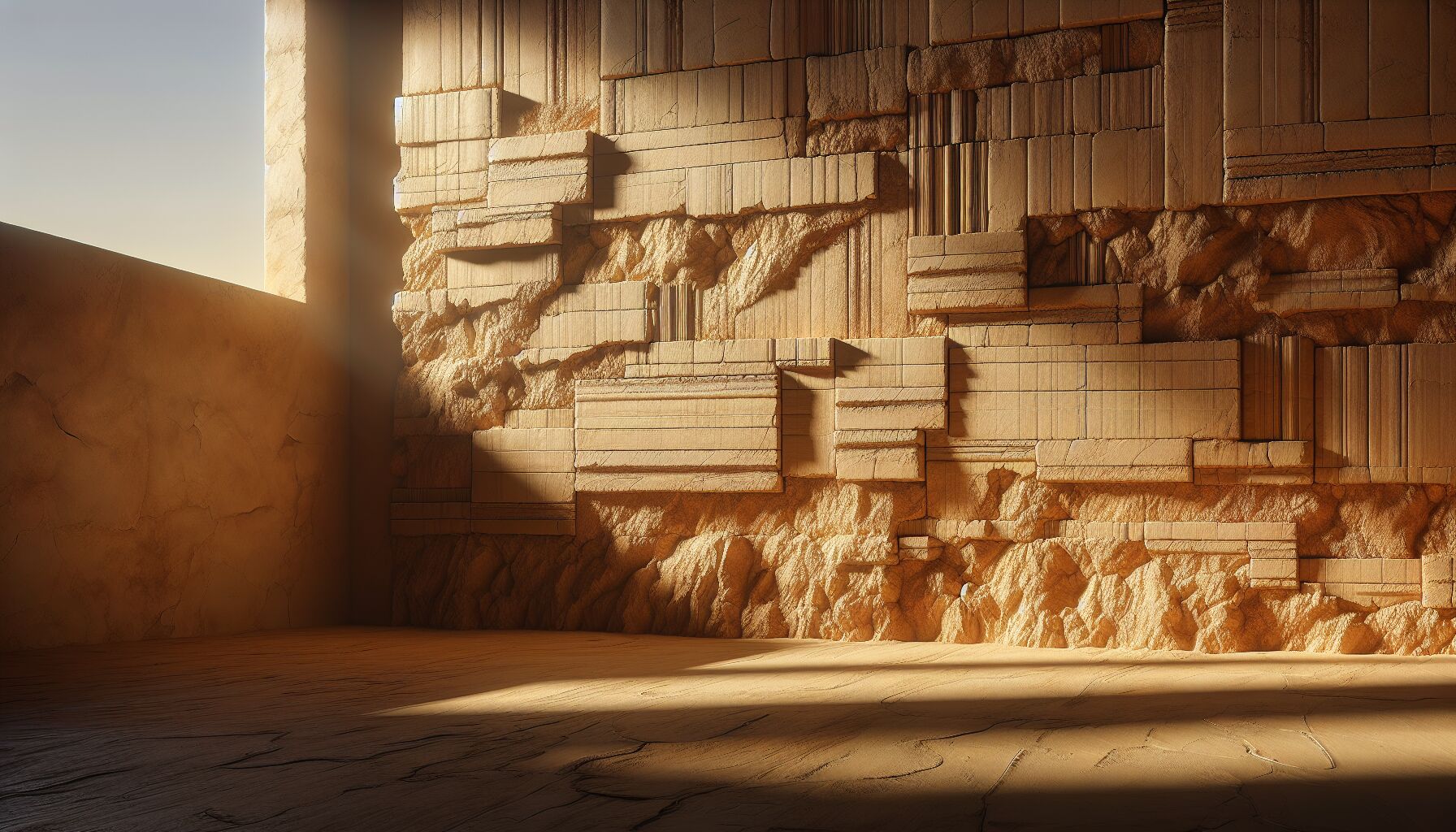 Rammed earth construction has an impressive lineage, echoing through history with a profound sense of purpose that never truly fades. It’s not just an ancient craft — it’s an enduring testament to humanity’s resourcefulness. At its core, rammed earth is a method that embraces the earth beneath our feet, quite literally shaping it into sturdy and lasting structures. This technique stretches back thousands of years, with some of the earliest examples found in the likes of ancient China and North Africa; they knew a thing or two about creating walls that withstand the test of time.
Rammed earth construction has an impressive lineage, echoing through history with a profound sense of purpose that never truly fades. It’s not just an ancient craft — it’s an enduring testament to humanity’s resourcefulness. At its core, rammed earth is a method that embraces the earth beneath our feet, quite literally shaping it into sturdy and lasting structures. This technique stretches back thousands of years, with some of the earliest examples found in the likes of ancient China and North Africa; they knew a thing or two about creating walls that withstand the test of time.
The Great Wall of China, a giant among historical landmarks, whispers stories told through its segments of rammed earth. This ancient building technique didn’t just provide defense — it symbolized unity and resilience. The people who lived centuries ago understood the wealth of sustainability hidden in plain sight. As much as we are often swept up in the whirlwind of modern materials, there’s something undeniably grounding about using what’s readily available. Rammed earth reflects an intimacy with nature; it’s a building technique rooted in environmental appreciation.
If we take a moment, does it surprise us that civilizations used what was abundant rather than imported? There’s a practical genius to it that’s hard to overlook. This wasn’t just about survival; it was about harmony with the land. William Morris once said, “Have nothing in your house that you do not know to be useful, or believe to be beautiful.” Rammed earth fits this philosophy snugly, offering both utility and an earthy allure.
Many ancient towns, such as those scattered along the Silk Road, owe their durability to this simple yet profound technique. Structures were often designed to breathe — an early understanding of passive heating and cooling systems that makes even today’s architects nod in respect. There’s a serene beauty in such symbiosis, where the building becomes a part of the landscape rather than an imposition on it.
This connection to the earth, both literally and spiritually, is something we often forget in the modern age of steel and glass. But perhaps there’s an awakening on the horizon, a beckoning back to these sustainable ways of old. Rammed earth isn’t just a relic of the past; it’s a guiding light for the future of sustainable housing. By tapping into the rhythms of the past, we might just find solutions for tomorrow that are both wise and kind to our environment.
History teaches us — if we choose to listen — that sometimes the most straightforward methods hold the deepest truths. It’s about community, resourcefulness, and respect for the world around us. The legacy of rammed earth is a reminder: we are but stewards of this earth, caretakers rather than conquerors. Embracing these methods, inherited from those who walked before us, might lead us toward a more sustainable path.
Construction techniques and materials
When we delve into the art of crafting with the earth itself, rammed earth construction comes alive with a palpable blend of practicality and poetry. It’s akin to sculpting with the earth’s bones, using natural clayish soil, sand, and gravel. The process — although simple in essence — requires a meticulous touch. Builders compress layers of these materials within sturdy frameworks until the combination hardens into a solid form. Over time, this isn’t just dirt shaped into walls; it metamorphoses into a timeless fortress of sustainability.
Have you ever considered the nature of these ingredients? This isn’t just any soil picked at random. The mixture ideally has clay content that acts as the adhesive, binding the sand and gravel into one cohesive mass. It’s like baking — finding the right recipe takes both science and intuition. Professionals often test local soil for shrinkage and plasticity, ensuring that the earth holds well through the seasons. And though “ramming” the earth may sound rough, it’s more a dance than a drumbeat, with each layer compressed to optimal density for strength and durability.
But what’s fascinating here is the beauty intrinsic to these walls. Without needing plaster or paint, the natural strata of colored earth create stunning visuals — a tapestry of layered history, marking each layer with a unique hue. Much like sedimentary rock, these bands remind us of time’s passage and the stories held within. Isn’t there a certain wonder in knowing your home reflects the earth’s artistry?
On the practical front, rammed earth walls boast formidable insulation properties. They absorb heat during the day and release it slowly, creating a naturally temperate environment. As sustainable housing gains momentum, this ancient building technique has never been more relevant. With modern tweaks and mixes using stabilizers like cement or lime, these earthen walls can meet even the strictest building codes while maintaining their eco-friendly roots.
And while high-tech gadgets and systems can manage temperature or humidity, the quiet efficiency of earth-aligned techniques speaks to a deeper understanding. The walls themselves breathe, an exchange of thermal energy that doesn’t rely on synthetic insulation materials. Is it not a symphony of humans’ ingenuity harmonizing with natural cycles?
Simultaneously rugged and refined, these tactile structures provide not just shelter but a connection to the land itself. There’s reverence in this process — an acknowledgment that building isn’t merely about adding to the landscape, but weaving something new from the land itself. It raises a thought-provoking question: in our quest for progress, shouldn’t more of our solutions resonate with this age-old wisdom?
As current builders ponder their impact, turning to these techniques is a chance to listen to the past and honor the earth. For those keen-eyed folks who yearn for a deeper connection with their surroundings, isn’t there magic in living amongst walls that seem to have sprouted from the earth beneath your feet? Through each stone, grain, and compression, rammed earth homes stand as enduring tributes to sustainable innovation, crafted from life’s most elemental materials.
Modern benefits and applications
 When you think about modern living, concrete jungles might spring to mind, but there’s a quiet revolution happening: a return to the earthen roots with rammed earth homes. These structures seem to echo an ancient wisdom while offering contemporary perks just perfect for today’s sustainable housing market. Why has this age-old technique found a new voice among the clamor of urban development? It’s simple: the benefits speak for themselves — and they’re not just whispers.
When you think about modern living, concrete jungles might spring to mind, but there’s a quiet revolution happening: a return to the earthen roots with rammed earth homes. These structures seem to echo an ancient wisdom while offering contemporary perks just perfect for today’s sustainable housing market. Why has this age-old technique found a new voice among the clamor of urban development? It’s simple: the benefits speak for themselves — and they’re not just whispers.
Let’s settle into the practicalities first. Rammed earth, renowned for its innate thermal mass properties, regulates indoor temperatures naturally. This means during those scorching summer afternoons, your home becomes a cool sanctuary without the constant hum of air conditioning. And in the winter, the walls keep the chill at bay, wrapping you in warmth metaphorically — think of them as a gentle embrace from nature. This harmonic heating and cooling don’t just boost comfort; they trim energy bills too. And who wouldn’t want a little extra cash in their pocket?
But the perks of rammed earth go beyond just personal comfort. There’s an environmental grace intertwined with these ancient building techniques. Utilizing locally sourced materials minimizes the carbon footprint significantly compared to other construction methods loaded with transport-heavy elements like steel or bricks. The very act of building becomes a greener affair, aligning with the earth rather than exploiting it. Isn’t it something special when construction feels more like participation in the land’s rhythms than an extraction?
Now, why stop there? For those thinking about durability, here’s a little secret: rammed earth is as tough as old boots. Remember, we’re talking structures that withstand the test of time, from the silent walls of ancient China to cutting-edge homes in Australia today. They resist fire, pests, and time itself — perhaps a little testament to the builders who appreciate that quality is knit in the fabric of patience. This resilience makes them prime candidates for those conscious of sustainability — it’s a relationship with the earth that gives back as much as it takes.
For the creatively inclined, there are aesthetic wonders to discover within these earthy walls. Each layer in a rammed earth wall tells its own story — a visual narrative created through textures and colors left exposed for admiration. Like an artist’s canvas painted by nature itself, these walls stand as masterpieces of design born from sustainable housing principles. Decoration feels nearly redundant when the building itself is the artwork.
At this junction, it’s not merely about sustainability or nostalgia. It’s about truth and intention, pulling lessons from both past and present. What if more of our homes mirrored the natural world this way, crafting places where technology and tradition converse seamlessly? It’s an intentional choice in modern architecture that elevates the conversation about environmental responsibility and, quite frankly, a soul-soothing way to live.
As we weave through this chapter of sustainable housing, embracing a method like rammed earth isn’t just commendable — it’s essential. When you carve out a space using the gifts of the earth, you’re not just building a house; you’re crafting a home that mirrors a harmonious dance between human ingenuity and natural abundance. And maybe, just maybe, that connection is the truest luxury of all.
 DS Haven In Light Of Things
DS Haven In Light Of Things





